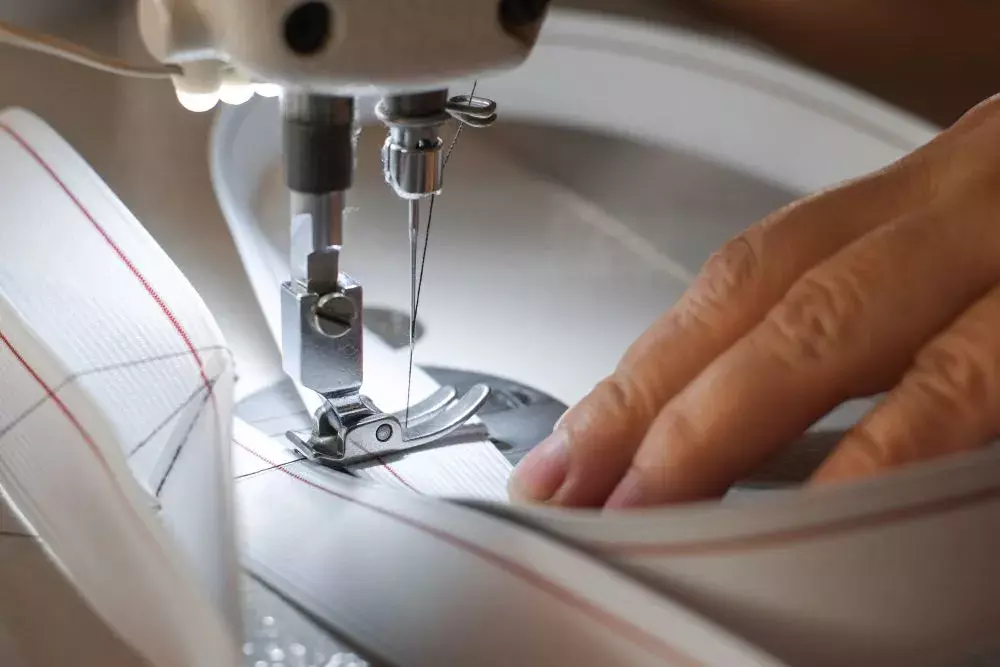Choosing the Right Elastic for Your Sewing Project: A Comprehensive Guide
2023-10-03
Part of becoming an intermediate or advanced sewing professional is learning how to use elastics in your projects. Elastics allow you to create items that can move and stretch in various ways.
However, learning to use elastic for sewing can feel overwhelming at first, as there are so many different types of elastics. To choose the right elastic for your project, look at these common types of elastic and the types of projects they’re usually used for.
Types of Elastic for Sewing and How to Use Them
Gaining a better understanding of how elastic can interact with fabric, needles, and thread is a great way to level up your sewing. The most common types of elastic for sewing include:
Drawcord Elastic
Drawcord elastic, or cord elastic, is a lightweight, narrow, long, and stretchy cord. As you might assume, this elastic type is usually used in items that close using drawcords, such as jackets, sweatpants, and some backpacks.
Usually, this elastic type doesn’t need to be stitched directly, but you’ll have to create a pathway or casing within your garment to move as intended.
Braided Elastic
One of the most versatile elastics is braided elastic. Much like drawcord elastics, braided elastics are often threaded into a casing within garments rather than stitched itself. This is especially the case for this style of elastic because if sewn in, needles can cause braided elastic to become weaker. Braided elastic works well in leg bands, waistbands, sleeve cuffs, and swimsuits.
Buttonhole Elastic
Buttonhole elastic is made for cuffs and waistbands that have multiple buttoning options. This way, the band will remain stretchy and comfortable no matter which button the wearer uses.
Many sewing enthusiasts use buttonhole elastic on children’s clothes since kids can grow so quickly. Buttonhole elastic makes it possible for kids to keep wearing the same items for longer.
Knitted Elastic
Knitted elastic is the right choice if your project requires you to stitch directly through your elastic. This type of elastic for sewing is wider and flatter than many other types and retains its flat shape even when sewn through or stretched.
Knitted elastic can be sewn directly onto fabrics, but it can also be threaded freely into casings without stitching. This type of elastic is typically used for items like suspenders, waistbands, sleeves, belts, and leg cuffs.
Foldover Elastic
Foldover elastic is made with a divet down the center, allowing sewing enthusiasts to fold it in half over an edge and secure it with stitching.
Adding foldover elastic to an edge on your project creates a secure yet stretchy binding, which gives seams added flexibility. You can use this elastic type for sewing projects like headbands, exercise garments, and other things designed to move and stretch a great deal during use.
Maternity Waistband Panels
Maternity garments need a much greater stretch capability than most typical garments, which is why their waistbands are made with a unique type of elastic panel. This panel is made of polyester and can be sewn into existing garments or added to brand-new projects.
Lingerie Elastic
The elastic used in lingerie is special, as it should be very stretchy and comfortable yet small and aesthetically pleasing. Lingerie elastic is designed to have a lot of stretch without being too thick or digging into the skin during use.
Before purchasing lingerie elastic, check the packaging to see whether your elastic can be sewn directly or if it should be fed into a casing during the sewing process. Sewing elastic that isn’t meant to be sewn can cause the garment to fall apart or feel uncomfortable to the wearer.
Non-Roll Elastic
For items that require heavier or thicker fabrics, a thin and delicate elastic most likely will not do the job. This is when you should use non-roll elastic, which is thick, firm, and designed to hold its shape and not twist or roll during use. Most non-roll elastics can be stitched and won’t become narrower when stretched out.
Shop Elastic for Sewing and Much More at GoldStar Tool
The right type of elastic for your project is waiting at GoldStar Tool. Visit us in-store in Los Angeles or shop online to find all the sewing tools you need for your project today.





